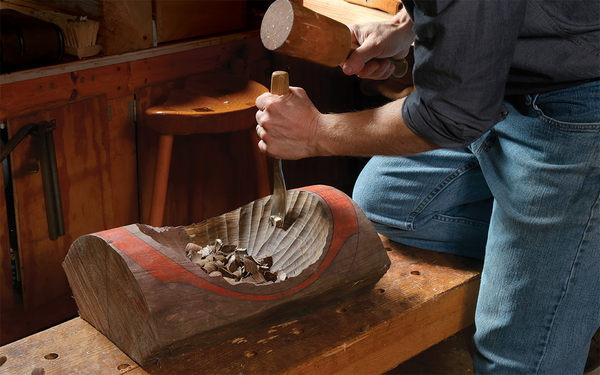Bent gouges in traditional woodworking: a historical perspective
In the world of traditional woodworking, few tools hold as much historical significance and craftsmanship as the bent gouge. This versatile tool has been a mainstay in woodshops for centuries, contributing to the creation of intricate carvings, detailed sculptures, and fine furniture. In this blog post, we'll delve into the rich history of bent gouges, exploring their origins, evolution, and enduring relevance in the art of woodworking.
Bent gouges in traditional woodworking: a historical perspective

Origins of the bent gouge:
The bent gouge traces its origins back to ancient civilizations, where artisans crafted rudimentary versions of the tool from stone, bone, or antler. These early gouges were used for carving wood, bone, and other materials, laying the foundation for the development of more sophisticated woodworking tools.
Evolution of the bent gouge:
Over time, as woodworking techniques advanced, so too did the design and functionality of the bent gouge. During the Middle Ages, European craftsmen refined the tool, forging it from iron and steel for enhanced durability and precision. The addition of a bent shaft allowed woodworkers to reach into tight spaces and carve intricate details with greater ease.
Applications in traditional woodworking:
Bent gouges are prized for their versatility and precision, making them indispensable tools in various woodworking applications. From shaping intricate designs on furniture and cabinetry to carving ornate decorations on musical instruments and architectural elements, bent gouges offer woodworkers unparalleled control and finesse.
Anatomy of a bent gouge:
Blade: The blade of a bent gouge is typically made from high-carbon steel or tool steel, offering exceptional sharpness and edge retention.
Shaft: The shaft of the gouge is bent at a slight angle, allowing woodworkers to reach into tight spaces and carve complex contours with ease.
Handle: Traditional bent gouges feature wooden handles, meticulously crafted for comfort and control during extended use.
Techniques for using bent gouges:
Relief Carving: Bent gouges excel at relief carving, where woodworkers carve away material from a flat surface to create three-dimensional designs and patterns.
Hollowing: Woodturners use bent gouges for hollowing out bowls, vases, and other turned objects, shaping the interior surfaces with precision and accuracy.
Detail Work: The fine tip and curved blade of a bent gouge make it ideal for delicate detail work, such as shaping curves, creating intricate patterns, and refining edges.
Maintaining and sharpening bent gouges:
Proper maintenance and sharpening are essential for keeping bent gouges in optimal condition. Woodworkers often use sharpening stones, honing guides, and leather strops to maintain a razor-sharp edge on the blade, ensuring clean cuts and smooth carving action.
Conclusion:
The bent gouge stands as a testament to the ingenuity and craftsmanship of generations of woodworkers. From its humble beginnings as a primitive carving tool to its esteemed status in modern woodworking, the bent gouge continues to play a vital role in shaping wood into works of art. Whether crafting intricate details or shaping bold contours, woodworkers rely on the precision and versatility of the bent gouge to bring their creative visions to life.













